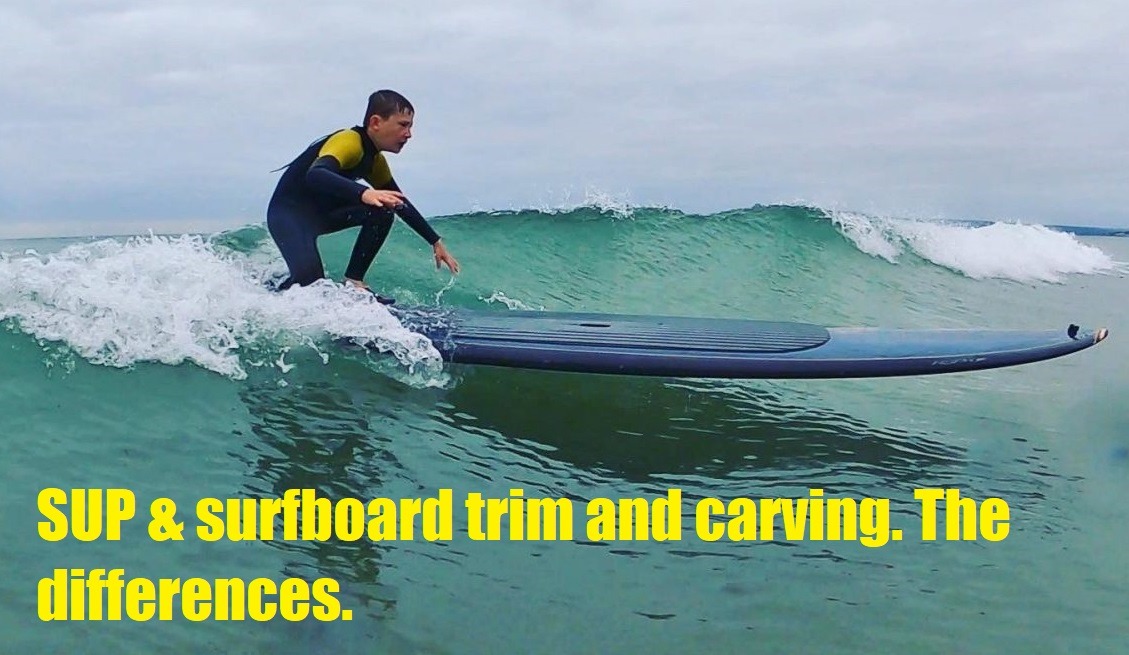SUP and surfboard riding isn’t just a case of getting to your feet and remaining static. For effective and efficient piloting he/she needs to be proactive. Performing as if your feet have superglue on them is never going to yield best results. And this goes for riding waves (on both a surfboard and SUP) as well as paddling on the flat.
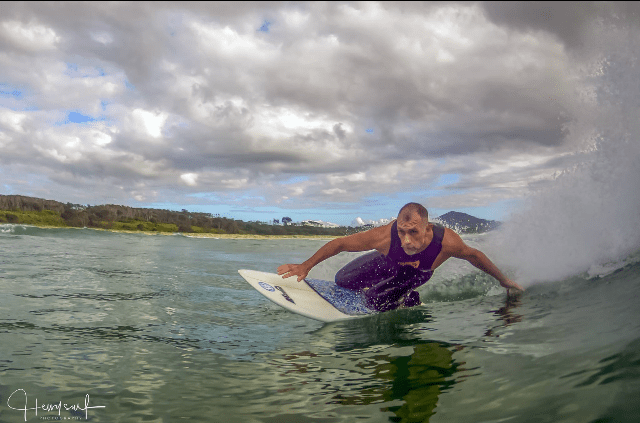
SUP and surfboard trim – nose to tail.
Trimming your board of choice is about gaining maximum efficiency in the direction of travel. With trimming in mind the board is more flat than when carving. You’re trying to achieve additional speed, or slow things down while possibly cutting along the green part of a wave when riding swell.
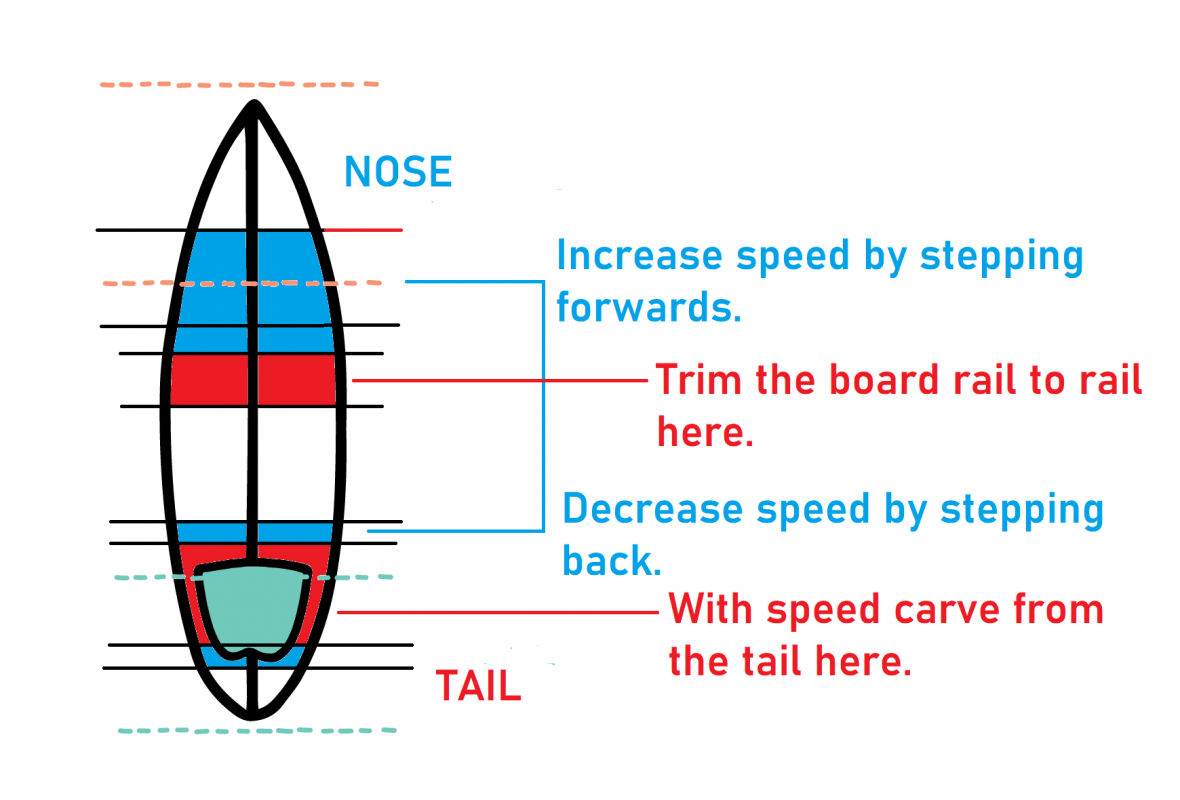
Moving towards the nose or back towards the board’s tail can have a dramatic effect on speed. Edging forwards and the board’s tail lifts with the fins in tandem. This serves to unstick your sled a tad and reduce the drag from fins. And your weight shift to the nose shoves the board forwards an extra knot or two. Additional momentum is therefore achieved.
Moving back towards the tail slows things down. If on a lump it allows the wave’s power center (the pocket) to catch up with you which is essential if you want more oomph for carving.
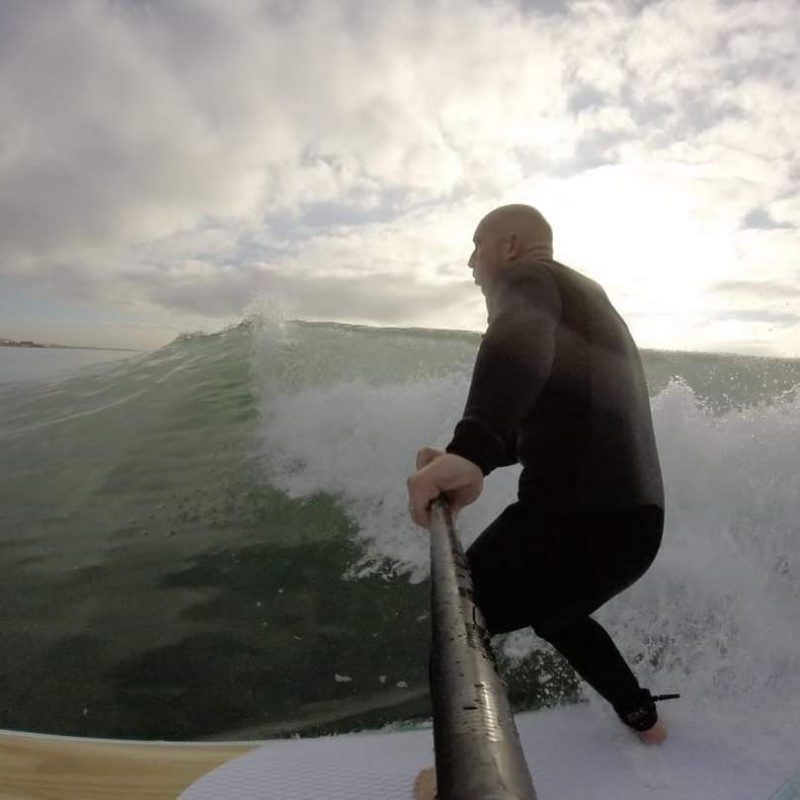
Trimming your board rail to rail.
Unlike carving you’re not looking to engage the board’s rail fully. Trimming side to side teases the board along the wave in the direction it’s peeling. This, when combined with nose to tail trim, can help generate speed and round sections or make it over fatter spots.
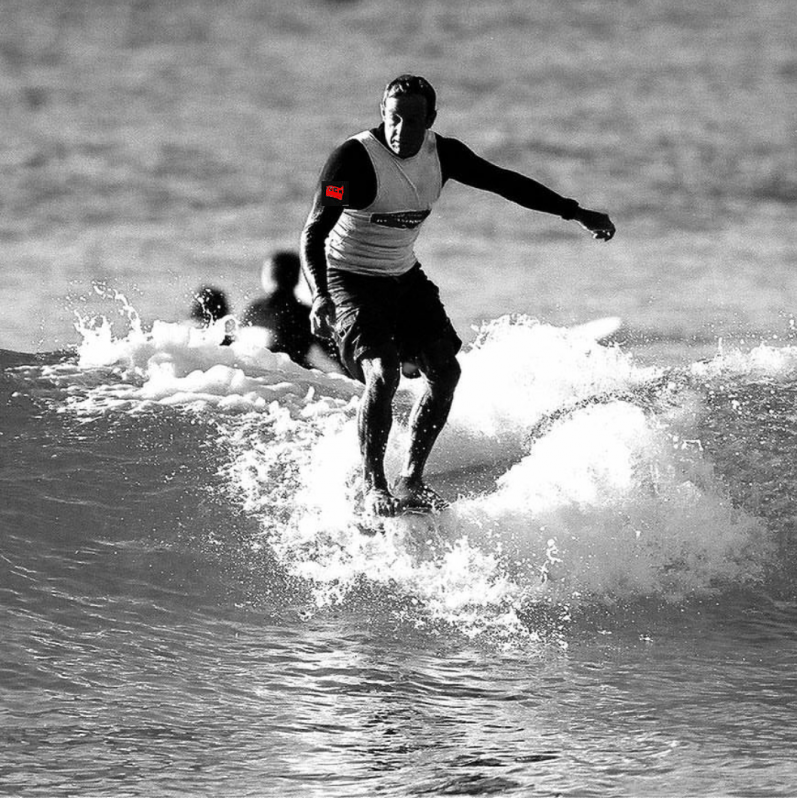
With flat water SUPing rail to rail trim can reduce the amount of board in contact with water and deliver more efficiency. Some riders call this railing. It can be a useful tactic if SUP racing for instance. It also allows experienced paddlers to stroke on just one side for longer. Which is also more efficient.
SUP and surfboard carving.
Moving on from riding unbroken waves carving is the ultimate goal. Whether surfing or SUP surfing the idea is to get in position to really gouge and use the board’s rail and rocker shape.
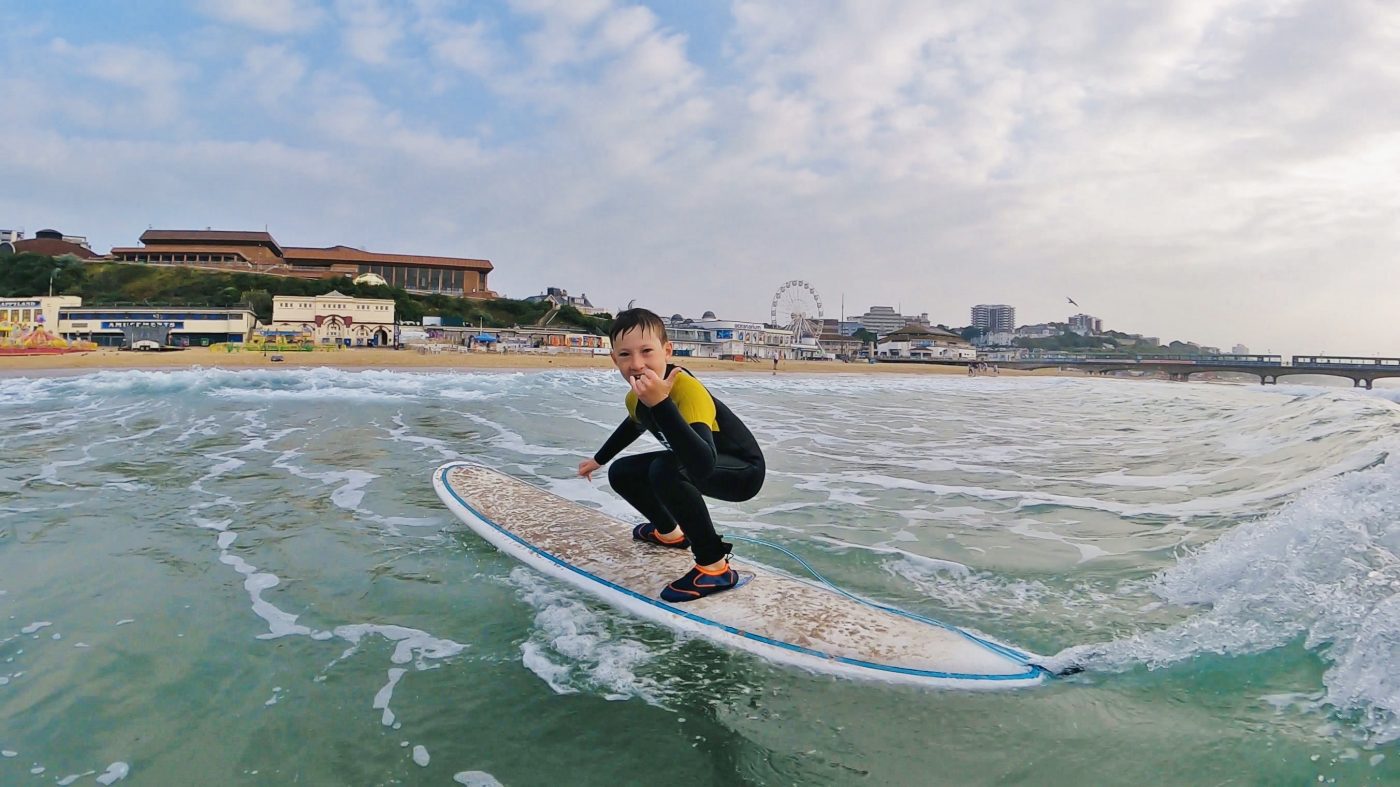
Carving from the wave’s trough before carving off the lip allows spray chucking and much fulfillment to be had. The secret to successful carving is speed. And the way to generate additional speed on a wave is by employing the trim techniques above.
With speed, and good positioning, riders can step back towards the board’s tail and engage the rail fully. From a bottom turn, this can slingshot you up to the lip. And with a quick weight transfer, and engaging of the opposite rail, you can carve back down. In the process enjoying even more speed as you drop back to the trough. The idea is to keep this going as long as possible thereby keeping speed and carves going for the entire length of the wave.
SUP vs surfing.
Stand up paddle boarding gives you the additional power of paddling. Using it correctly will help with all the above. Coupled with the oversize nature (and weight) of SUP boards lesser quality waves can be ridden more dynamically. In a lot of instances, the type of waves ripe for SUP surfing are no match for a surfboard. Which may float your boat or not…
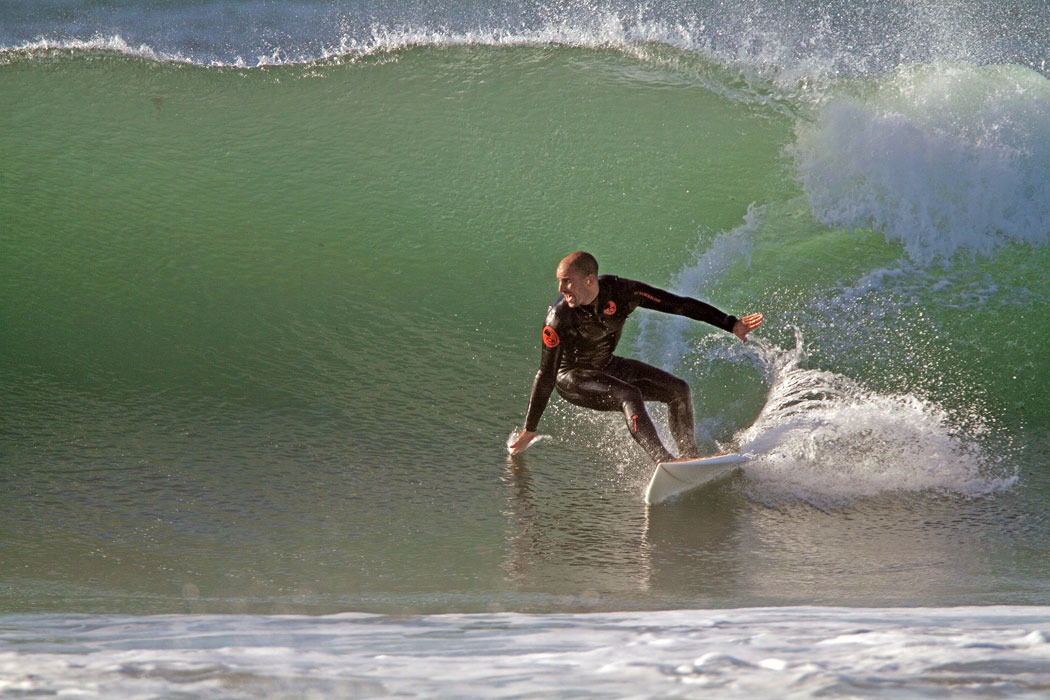
As a surfer, you have to use your legs and pump by generating an up and down motion. From the beach, this looks like bouncing. But actually, that would stall your ride. Instead, riders are aiming to induce forward thrust and gain more drive and ultimately speed from their fins. Better quality waves will always help a surfer as well.
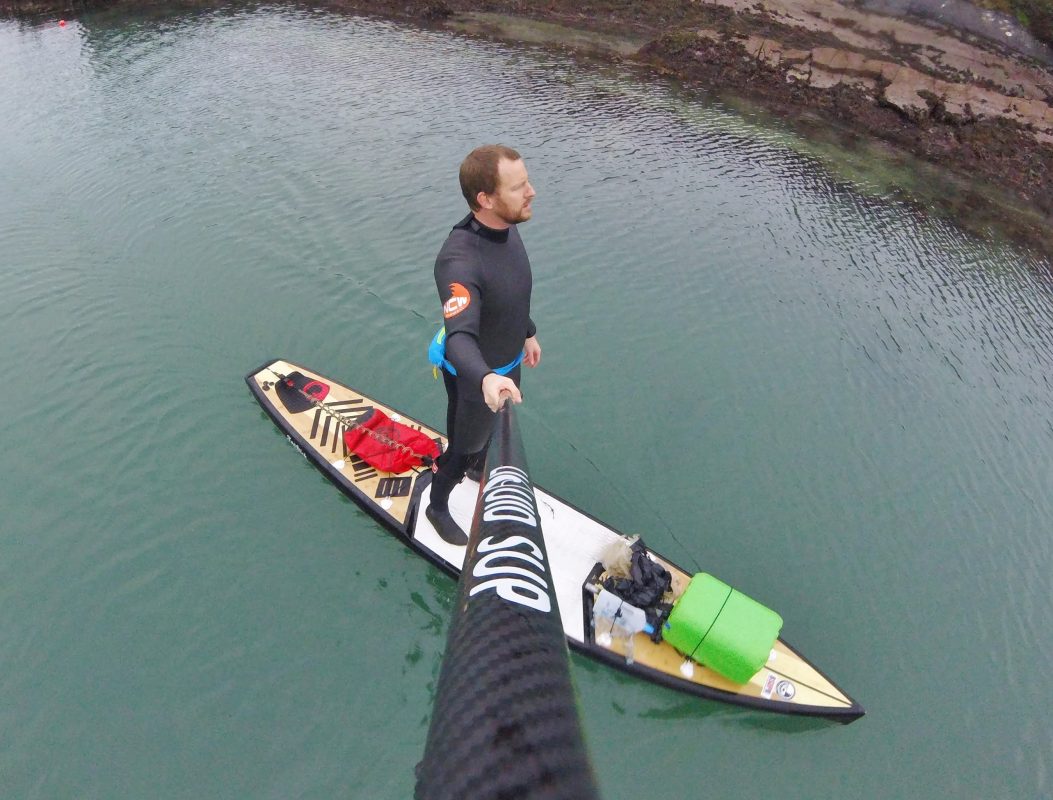
Or switch up your craft to a longboard, junky wave surfboard machine or even SUP when the swell’s not playing ball.
Thanks to James Parker, Matt Gallagher, Bill Morris and Dave Ludgate for pics.
For more surfing and SUP knowledge check out the following pages.

